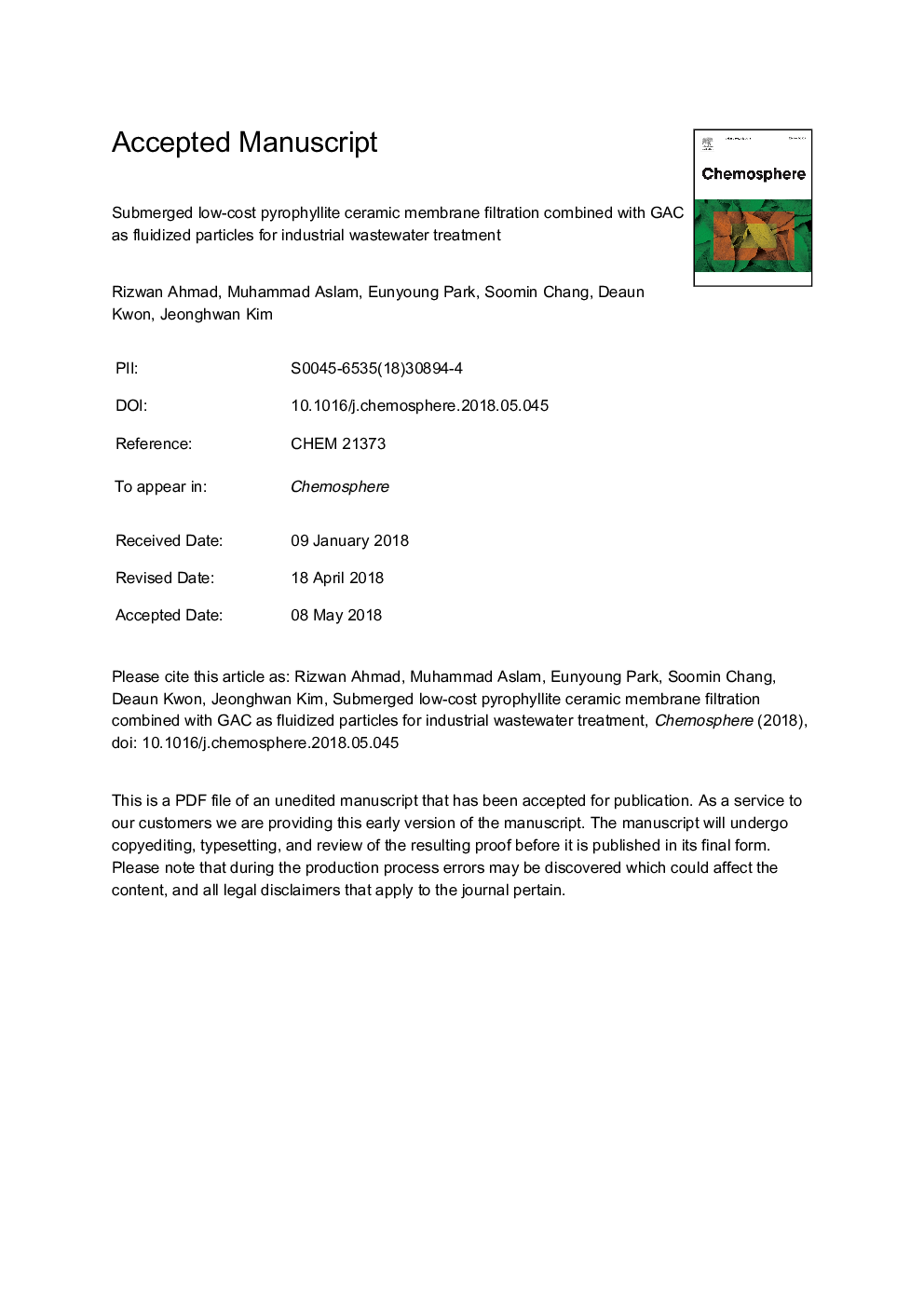| Article ID | Journal | Published Year | Pages | File Type |
|---|---|---|---|---|
| 8851001 | Chemosphere | 2018 | 30 Pages |
Abstract
Submerged ceramic membrane reactor treating industrial wastewater was combined with granular activated carbon (GAC) particles to control membrane fouling and organic removal efficiency. The GAC particles were suspended along the membrane surface under bulk recirculation only through the reactor without any gas sparging. Membrane support coated with Al2O3 layer (CPM) and uncoated one (UPM) was compared at constant flux mode of filtration. The membrane support consisted of 80% of pyrophyllite and 20% of alumina. Under up-flow velocity of 0.031â¯mâ¯sâ1 through bulk recirculation only without GAC particles, the fouling rates were observed as 0.011 and 0.013â¯barâ¯hâ1 for the CPM and UPM, respectively. With suspension of GAC particles, fouling mitigation was enhanced considerably and this effect was more pronounced with CPM than UPM under the same upflow velocity (90 vs. 57%). In addition, the GAC suspension increased critical flux by 46% higher with CPM than that observed without the carbon particles. The organic removal efficiency of the UPM was lower than that of CPM while the fouling rate was much greater probably due to pore blocking caused by organic dye compounds. For the both membranes, suspension of GAC particles along the membrane surface increased organic removal efficiency higher than 90%. The organic removal efficiency was enhanced by increasing permeate flux, but it became lower as upflow velocity was higher.
Related Topics
Life Sciences
Environmental Science
Environmental Chemistry
Authors
Rizwan Ahmad, Muhammad Aslam, Eunyoung Park, Soomin Chang, Deaun Kwon, Jeonghwan Kim,
